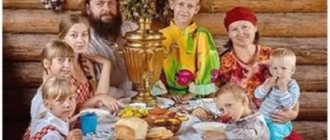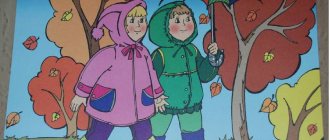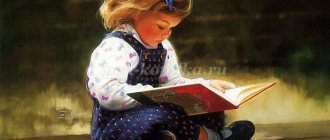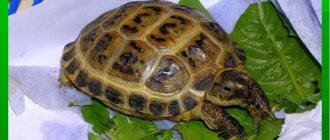Walks and observations in the summer in kindergarten
Consultation for educators on the topic:
Walks and observations in the summer
Author: Shchukina Natalya Yurievna, teacher of nursery/kindergarten No. 22 of a sanatorium type for tubi-infected children, Pavlodar Description of the material: I offer you a consultation for teachers of preschool institutions. This material will be useful to educators of all age groups. This material will help you properly plan and conduct walks in the summer. Consultation for educators on the topic: Walks and observations in the summer Each walk contains: -observations that form specific knowledge that develop thinking, interest and love for nature, a sense of beauty; - didactic games and experiments , which allow the child to consolidate knowledge about the world around him, give real ideas about the various aspects of the object being studied, about its relationships with other objects and with the external environment; - outdoor games that help relieve mental stress from activities and develop moral qualities; -an artistic word that helps children explore the world and develop curiosity. - labor education , which helps to master skills and abilities. The content and forms of labor organization depend on the weather and time of year. Summer opens up new opportunities to introduce children to nature: many changes occur in nature. The time children spend on the site increases (up to 3.5-4 hours), so it is necessary to think in advance about the activities of adults and children during a walk. To organize interesting observations of children, educators should be well aware of the sequence of occurrence of certain phenomena, the nature of their native land, and the ecology of plants and animals in the immediate natural environment. Walking, hiking, excursions, and targeted walks will be a wonderful vacation for children in the summer, as well as a way to learn about the world around them and themselves in it. Natural conditions will give preschoolers a lot of impressions and will contribute to the improvement of movement. Each walk-hike, targeted walk and excursion is preceded by preliminary work with preschoolers. Thus, the teacher not only conducts a series of conversations, games, and activities in which children receive the necessary information and master special terms, but also activates knowledge of traffic rules in case the route of a walk or hike crosses highways. Before a hike, excursion, or targeted walk, preschoolers are told the purpose of the upcoming activity in order to arouse their interest. Children should know where they will go, why, and what they will see. Starting from the second youngest group, targeted walks are carried out that go outside the kindergarten site: to a pond, to a meadow, etc. On these walks, children are introduced to colorful natural phenomena. During walks, the teacher can introduce children to those natural phenomena, the idea of which takes a long time to develop. One type of activity to introduce children to nature is an excursion. During the excursion, the child can observe natural phenomena, seasonal changes in a natural setting, see how man transforms nature in accordance with the requirements of life and how nature serves people. The main part of the excursion is collective observation. The main tasks are solved here. The teacher helps children notice and understand the characteristic signs of objects and phenomena. This is achieved using various techniques (questions, riddles, poems, survey activities, game techniques). The teacher supplements the observations with his story and explanation. It is useful to use children's fiction in the observation process. At the end of the main part, children must be given the opportunity to satisfy their curiosity in individual and independent observations and collection of natural history material. However, when giving the task to collect material, you should strictly limit its quantity in order to focus the children’s attention only on certain plants or animals, in addition, to solve the problem of caring for nature. Wildlife observations. 1. Observations of plants. The trees and bushes have lush and green foliage. Children look at the leaves of various trees, note that they are different in shape and size; distinguish and name bushes and trees. There are many different flowers in meadows, forest edges, parks, and gardens. Meadow flowers: dandelion, St. John's wort, yarrow, clover, chamomile, tansy, bell. Garden: peony, phlox, gladiolus, nasturtium, rose, aster, dahlia. There are a lot of berries in the forest (edible - strawberries, blueberries, raspberries, blueberries; poisonous - wolf's bast, crow's eye, nightshade, elderberry) and mushrooms (edible and inedible). People make hay, harvest vegetables, fruits and berries. Observations are carried out with the aim of enriching children's ideas about plants. You can talk about the healing properties of familiar plants from which infusion, tea, syrup, oil, and powder are obtained. Some medicinal herbs can be planted on the site by organizing a phytogarden or phytobed. The ability to pay attention to the beauty of nature, the ability to see and admire the beautiful is formed. Children learn to take care of plants, not to crush or tear them unnecessarily. 2. Observations of animals. Continue work on familiarizing yourself with animals. Reinforce the ideas children received in the spring. Animals take care of their cubs, teach them how to get food and hide from enemies. An adult needs to explain to children that birds and animals are entering an important time - nursing their offspring. Children should know how animals behave and what their mom and dad call them. The younger ones imitate the movements and vocal reactions of animals, the older ones list them. Pupils should be explained where stray animals come from and why they are dangerous. 3. Bird watching. In summer, children continue to watch birds. They pay attention to how quickly the birds fly, catching insects, and note how often they fly to the nest with food for the chicks. The teacher talks about how birds feed their chicks with insects in the summer, thus helping to preserve plants. You can suggest finding evidence of the usefulness of birds (look at the bark of trees, look for a bird’s nest, think and say how and what it feeds its chicks). While examining the trees, children will encounter traces of the destructive work of bark beetles and woodcutters. The guys themselves will come to the conclusion: “If there are no birds, the forest will die.” Preschoolers must be warned that birds’ nests should not be touched, otherwise they will stop living in them. In July, the teacher draws the children’s attention to how the birdsong gradually subsides. 4. Observations of insects. Many insects appear: butterfly, grasshopper, bee, ant, fly, beetle, mosquito, dragonfly. Butterfly, moth, admire them all together, examine the structure of their bodies with a magnifying glass. Give the concept of “fragile”, a moth is a “living beautiful flower”. While admiring butterflies with children, an adult can tell them why butterfly wings have different colors. It turns out that it helps insects hide from enemies. The peacock butterfly has large spots (eyes) on its wings. When a bird flies up, the butterfly opens its wings, which scares the bird. The green grasshopper is difficult to notice on green grass, but it can be clearly heard from afar. What is he “singing” with? It has a special membrane on its right elytra. And on the left there is a thick vein with small teeth. When the left elytra rubs against the right, a chirping sound is produced. Invite children to listen to the chirping of a grasshopper, watch how it jumps and hides in the grass. Encourage children to have a kind attitude towards this harmless creature. Ladybug, beetle. Use a magnifying glass when observing. Examine the web-like legs, the crack on the back, and the wings. To form a desire to admire and protect living beings, not to harm them. In the summer, children and adults are annoyed by unpleasant “neighbors” - flies, wasps. However, there is nothing superfluous in nature. Explain to children that flies destroy rotting plant and animal remains, being orderlies. Wasps provide benefits by eating harmful insects, including house flies. It is necessary to develop a caring attitude towards insects in children. Observations of inanimate nature. 1. Seasonal and weather phenomena. The sun is shining brightly. Rains are rare, warm, sometimes torrential, with lightning, thunder and hail. While observing rain, children are led to understand the reasons for the different nature of precipitation in winter and summer, and their dependence on air temperature. The teacher teaches children not to be afraid of thunderstorms, but to be careful not to hide under tall trees during a thunderstorm. It is interesting to observe morning and evening dew, fog, and explain the reason for their formation. At the beginning of summer it can be cool and the weather changes frequently. It gets hot from mid-June. Show and clarify: fine day, summer rain. Connect seasonal conditions with lightweight clothing for children. Listening to poetry promotes colorful perception and brings children to the concept - summer is red. Show a bright seasonal phenomenon - a rainbow. Older children learn to determine the weather condition based on certain signs. Midsummer begins in July, from the moment the linden blossoms. July is the hottest month of the year, there are often showers and thunderstorms. The water in the pond is warm and you can swim. August marks the end of summer. The days are warm, but the sun is no longer as hot as in July. Thunderstorms end, cool winds and fogs appear. The water in reservoirs is cooling. In order to show children that summer has the longest day, observations of the times of sunrise and sunset continue, which are carried out in different seasons. While walking, observe the height of the sun. In the preparatory group, when determining the height of the sun, you can observe the shadow from objects, from the children themselves in the morning, when the sun has not yet risen high, and in the afternoon, when the sun is almost overhead, measure the length of the shadow. For observations, you need to choose an open, convenient place, stick a stick into the ground and observe the shadow cast by a vertical stick illuminated by the sun. Children notice that the higher the sun rises, the shorter the shadow from the stick. Based on familiarity with folk signs, children learn to notice changes in nature and predict weather conditions. 2. Water, sand, clay, pebbles, shells. Given to children under adult supervision. Ideas about the properties of these natural materials are clarified, deepened and consolidated in the process of organized observations and independent activities of children. The most relevant and favorite games in the summer are games with water and sand. 3. Observations of an adult’s work. Continue to work, including children in the teacher’s work activities. Encourage children to take part in the harvest. 4. Observations of street life. Targeted walks. It should be noted that on the streets you can see watering machines and many cars and trucks. Note to be careful. Let's talk about the traffic light again. In the process of observations, the teacher must teach children to see the charm of the natural corners of their native land, so that they retain the aroma of the flowers of their childhood and homeland in their memory for the rest of their lives. During classes, it is necessary to constantly remind that it is necessary to protect nature and take care of it - this is how the foundations of environmental education are formed at an early age. Revealing the signs of inanimate things (does not grow, does not live, does not breathe), the teacher compares objects of inanimate and living nature: all animals and plants require care - they grow, they live. Games for a walk. In summer, play occupies a large place in children's lives. Closeness to nature, sun, warmth, being in the air - all this creates a positive emotional mood and increases the craving for the game. New vivid impressions enrich the content of children's games. The abundance of various natural materials - sand, water, cones, branches, acorns, pebbles, etc. - contributes to the development of creative ideas in the game and the implementation of the planned plot. The themes of games in summer are much richer and more varied. It is especially important in the summer to use games to create a good mood, a feeling of satisfaction, and cheerfulness in children, because this is the key to health, good rest and the full development of the child. An important prerequisite for organizing gaming activities is the creation of an environment. Conditions for all types of games are created in group areas. When placing various structures and devices for games on the site, it is necessary to leave a spacious area for the free activity of children, outdoor games and games with motor toys. With great pleasure, children play role-playing games in cozy gazebos, under awnings, and in houses. It is good to have simple structures in group areas - an airplane, a rocket, a bus, etc. Playing with water and sand requires special equipment and space - a sandbox with a canopy and a lid, water containers, toys for playing with sand. Sand requires systematic care: it must be dug up, watered, and cleared of debris daily. Children love to play “theater”. To do this, it is good to have a screen with beautiful bright curtains and a place where you can place a screen and a table for toy decorations and characters. In summer, it is especially important to keep toys and materials clean - they must be washed daily. When organizing children's play activities during the day, the weather should be taken into account. In hot weather, children should play quieter games. They need to be carried out in shaded areas of the site. Playing with water, blowing soap bubbles, and board games are good at this time. On cloudy days there should be more active sports games. It is important to arouse children’s interest in all types of games, since a variety of games and their reasonable combination contribute to diversified development. Throughout the summer, children enjoy taking part in outdoor games offered to adults, which carry enormous emotional potential and improve the health of children. Work. In the summer, children are asked to perform work activities with different motivations: - helping an adult (we will help the janitor water the flower garden) - taking care of some living creature (feeding birds, rabbits) - constructing buildings for the purpose of unfolding fairy-tale plots (based on the fairy tale “Teremok”, etc. etc.) -decorating the site (beautiful flags, flowers, etc.) -working in the garden (watering, weeding, loosening) -working in flower beds (watering, weeding, loosening, collecting seeds) It is also important for educators to convey information to parents about the wide opportunities to spend the summer interesting and useful with your child, while maintaining his health and leaving vivid impressions of the past holiday. When talking with parents of students, it is necessary to show that summer is the right time for the development and upbringing of children and it is important not to miss the opportunities that it provides. A variety of activities and new experiences await the child both in his hometown, outside of it, and on trips abroad. Therefore, it is necessary to prepare parents for active, educational, joint recreation with their children, during which it is so important to notice the unusual in the simple. In this case, you need not only to see an interesting phenomenon, but also to be able to explain it to the child, to keep it in the child’s memory for life, as a vivid childhood memory. These forms of work allow children to develop skills in behavior in nature, develop the ability to be surprised and surprised, cultivate an interested and caring attitude towards the environment, and introduce them to the sights of their hometown.
We recommend watching:
Organization of play activities in a different age group Organization of play activities in a different age group Parental competence
W. Livingston Larned. Father's repentance
Similar articles:
Organization of a walk in the summer in a preschool educational institution
Walking with preschoolers in the fall
Environmental education in kindergarten
Active consultation for preschool teachers. Sensory education for preschoolers
Consultation for educators “Use of ICT in working with parents”





